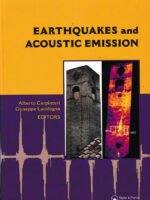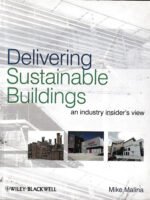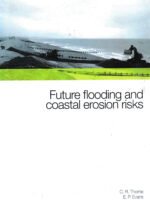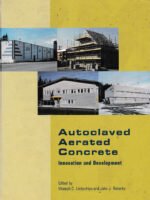Why Do Buildings Collapse In Earthquakes? Building For Safety In Seismic Areas
22-25 Business Days Shipping (Supply on Demand)
Delivery
₹75 shipping all over India
Secure Payment
100% Secure Payment
₹7,816.00₹10,349.00
In stock
Related products
-
Earthquakes and Acoustic Emission
₹4,928.00Earthquakes are caused by the sudden release of energy during the fracture of stressed rock within the Earth’s crust. This phenomenon is similar to that which occurs in materials under load, and although they take place on very different scales, these two phenomena – earthquakes in geophysics and damage in structural materials – have similarities. In both cases, there is a release of elastic energy from sources located inside a medium.These are selected papers from special sessions at the 11th International Conference on Fracture, held in Turin in 2005. They provide an outline of topics related to earthquakes and Acoustic Emission, and discuss the latest developments in this area. The papers have been divided into two categories: Seismic Mechanics & Earthquakes and Structural Failure & Acoustic Emission. Earthquakes and Acoustic Emission will serve as a useful supplementary textbook for postgraduates, while being of special interest to professionals in the field of earthquakes and acoustic emission.
₹15,399.00 -
Delivering a Sustainable Built Environment – an Industry Insider’s View
₹2,853.00The UK government has committed to reducing the nation s carbon emissions by 80% by 2050. Buildings currently use almost half of the UK s generated energy and they are now the focus of an unprecedented drive to cut energy use in our homes, offices, schools, libraries in fact in almost every building, public or private.
₹8,150.00 -
Civil Happiness
₹5,250.00Examining the crucial period in the late eighteenth century when economists such Smith and Genovesi tried to reconcile the classical tradition of Civil humanism emerging commercial society, this key book analyses the impact that the hedonist approach to economics had in removing the ethical conception of happiness
₹14,999.00 -
Emerging Technologies in NDT
₹7,392.00Non-destructive testing (NDT) is a pertinent task in nearly every field of human activity, from the assuring of aircraft integrity to the evaluation of infrastructural decay caused by deterioration or damage. The development of non-destructive methods for quality management results in economic and environmental benefits, in an increase in product reliability, and in improved public safety and security.
₹23,099.00 -
Future Flooding and Coastal Erosion Risks
₹7,497.00“Over £200 billion worth of assets are at risk around British rivers and coasts and those risks are likely to increase over the next 100 years due to changes in climate and in society.”
₹17,850.00 -
New Approaches Characterizing Groundwater Flow
₹8,224.00Research on the fundamental processes of flow, solute transport and immobilization, and forced degradation of contaminants in groundwater needs to be further advanced to enhance and guarantee groundwater availability. In line with this, current research has seen a transition to more engineering-related topics.
₹25,699.00 -
The Frightened Land: Land, Landscape and Politics in South Africa in the Twentieth Century
₹2,065.00An investigation into the spatial politics of separation and division in South Africa, principally during the apartheid years, and the effects of these physical and conceptual barriers on the land. In contrast to the weight of literature focusing on post-apartheid South Africa, the focus of this book includes the spatial, political and cultural landscape practices of the apartheid government and also refers to contemporary work done in Australia, England and the US
₹5,899.00 -
Autoclaved Aerated Concrete, Innovation and Development
₹9,471.00Autoclaved Aerated Concrete (AAC), has gained world-wide recognition as a high quality, innovative construction material which has been extensively used in a wide range of residential, commercial and industrial buildings. Recently there have been a number of innovative developments in AAC manufacturing processes, product properties and construction methods, resulting in enhanced performance to meet increasingly stringent building design requirements whilst ensuring environmental compliance. Indeed, AAC products have shown potential for being a universal material that can underwrite commercial, social and sustainable development.
₹22,550.00









Be the first to review “Why Do Buildings Collapse In Earthquakes? Building For Safety In Seismic Areas”